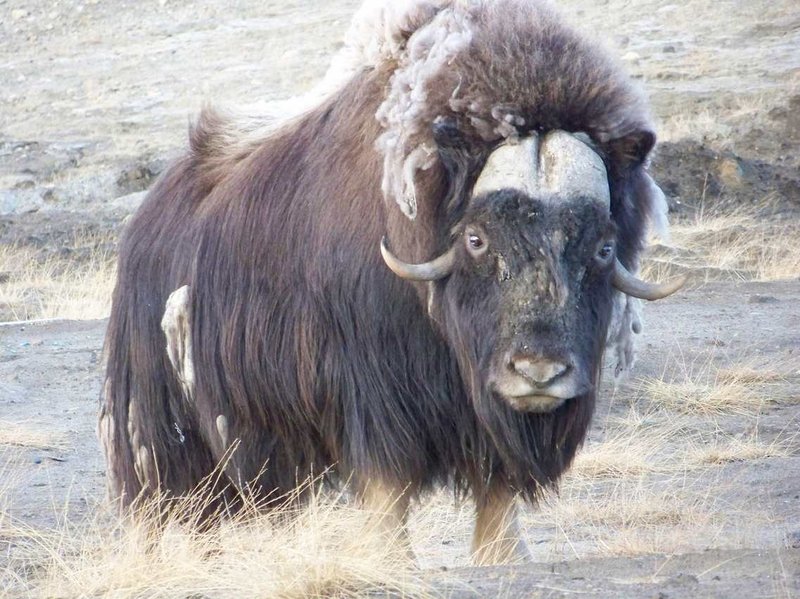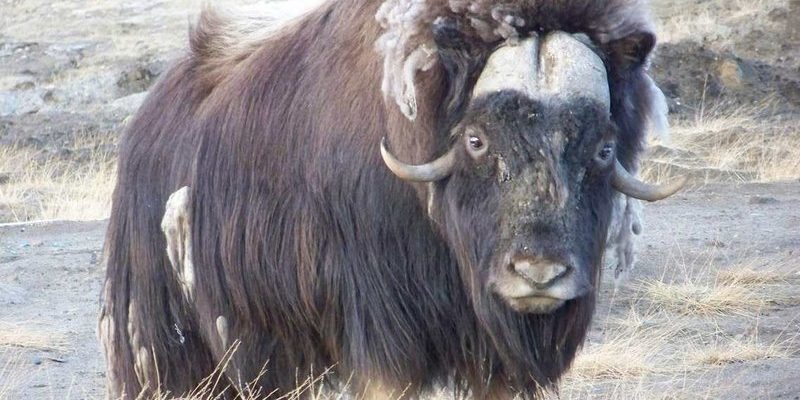
Muskoxen are often mistaken for bison or other large mammals due to their size and thick coats. Their unique appearance can lead to a slew of myths that are not just inaccurate but also rob us of a deeper appreciation of their lives and habits. So, let’s dive into the facts and debunk those myths one by one.
Muskoxen Are Just Like Bison
You might be wondering if muskoxen are simply a type of bison. Here’s the thing: while they share similar habitats and some physical traits, they are not the same animals at all. Muskoxen belong to a unique family called Ovibos, whereas bison are members of the Bovidae family.
Muskoxen have shorter, stockier builds with long, curved horns, while bison tend to be taller and bulkier with more pronounced humps on their backs. These differences might seem small, but they play a big role in how each species adapts to its environment. For example, muskoxen’s thick, double-layered fur helps them withstand extreme cold, while bison have shorter coats that reflect their grassland habitats.
If you’ve ever seen a muskox in person, their shaggy appearance might remind you of a living woolly mammoth. But remember, they are not related to them either. Instead, muskoxen have evolved from ancient species, adapting for survival in harsh climates.
Their Name Is Misleading
If you think the name “muskox” suggests a relationship with oxen, you’re not entirely wrong, but you’re also not completely right. The name comes from the animal’s musky scent, which is most prominent in males during the mating season. It doesn’t mean they are true oxen like cattle, though.
Muskoxen belong to their own distinct genus, and their lineage is unique. These animals are actually more closely related to goats and sheep than to oxen. So, while the “ox” in their name might lead to some confusion, it’s important to realize that muskoxen hold their own special place in the animal kingdom.
Muskoxen Are Aggressive Creatures
Another common misconception is that muskoxen are aggressive and dangerous. Sure, they can be protective of their young and will defend themselves if threatened, but that doesn’t make them inherently aggressive.
Imagine a mother bear protecting her cubs; the same protective instinct exists in muskoxen. When faced with danger, they usually form a tight circle, standing shoulder to shoulder to shield their calves from predators. This behavior is more about survival than aggression.
In reality, muskoxen are often wary of humans and prefer to avoid confrontation. If you ever spot one in the wild, they’re likely to keep their distance unless they feel cornered.
Muskoxen Are Endangered
It’s easy to assume that because muskoxen live in remote areas, they must be endangered. While their populations were significantly reduced in the past due to hunting, today they are not classified as endangered. In fact, conservation efforts have helped their numbers rebound in several regions, especially in Canada and Greenland.
It might surprise you to learn that there are now thriving populations of muskoxen in places where they were once nearly wiped out. Thanks to careful management and protection, these animals continue to thrive in their natural habitats.
That said, they still face challenges like habitat loss and climate change. So while they’re not endangered, ongoing conservation efforts remain crucial to ensuring their future.
Muskoxen Are Just for Show
Some might think of muskoxen as mere curiosities—animals you only see in zoos or documentaries. In reality, they’re a vital part of their ecosystem. They help maintain the balance of their habitat by grazing on the tough tundra vegetation, which allows other plants and animals to thrive.
You might not realize it, but muskoxen also serve a critical role for Indigenous communities in the Arctic. They provide food, clothing, and materials for tools, and their fur is used to make warm winter garments. This deep connection showcases how interwoven muskoxen are with the cultures and livelihoods of those living in harsh environments.
So, while you might think of them as fascinating creatures to learn about, remember that muskoxen are much more than just a subject of interest—they’re essential to their ecosystems and the communities that depend on them.
Muskoxen Only Live in the Arctic
It’s a common myth that muskoxen inhabit only the coldest parts of the Arctic. Although they are indeed closely associated with Arctic regions, they have adapted to live in a variety of environments, including subarctic areas and tundra regions.
These animals are incredibly resilient. They can withstand extreme temperatures, often reaching down to -40°F. However, they also can adapt to milder climates. In fact, in some places where they’ve been reintroduced, they thrive surprisingly well outside traditional Arctic boundaries.
This adaptability showcases their unique evolutionary traits and helps highlight how climate impacts animal species in ways we often overlook. Who would have thought that such hardy creatures could live in more diverse habitats than originally believed?
Muskoxen are truly remarkable animals, shrouded in some myths that can twist our perception of them. By understanding the truths behind these misconceptions, we gain a deeper appreciation for not just the muskox itself but the intricate balance of life in the tundras they call home.
Next time you encounter a discussion about muskoxen, you’ll be equipped with knowledge that counters the myths. Whether it’s their unique evolutionary traits, their role in ecosystems, or their fascinating social behaviors, there’s so much more to these creatures than what you may have thought. Embrace the chance to share this wisdom with others, and help demystify the wonderful world of the muskox!

